ZigZag is one of the oldest technical indicators that came to currency trading from the stock market. It allows traders to visualize the structure of the market.
What Is the ZigZag Indicator?
The ZigZag indicator is a way of measuring price movements without unnecessary noise. It works by calculating the distance between price swings (highs and lows). Then, this indicator calculates the pullback. If the pullback is bigger than some expected amount, the price movement is considered finished.
The ZigZag indicator helps traders automatically eliminate small price movements. Using it may help to see a clearer picture of the market structure.
How to Calculate the ZigZag Indicator
We'll start from a complex formula for advanced traders and then move to a simpler version.
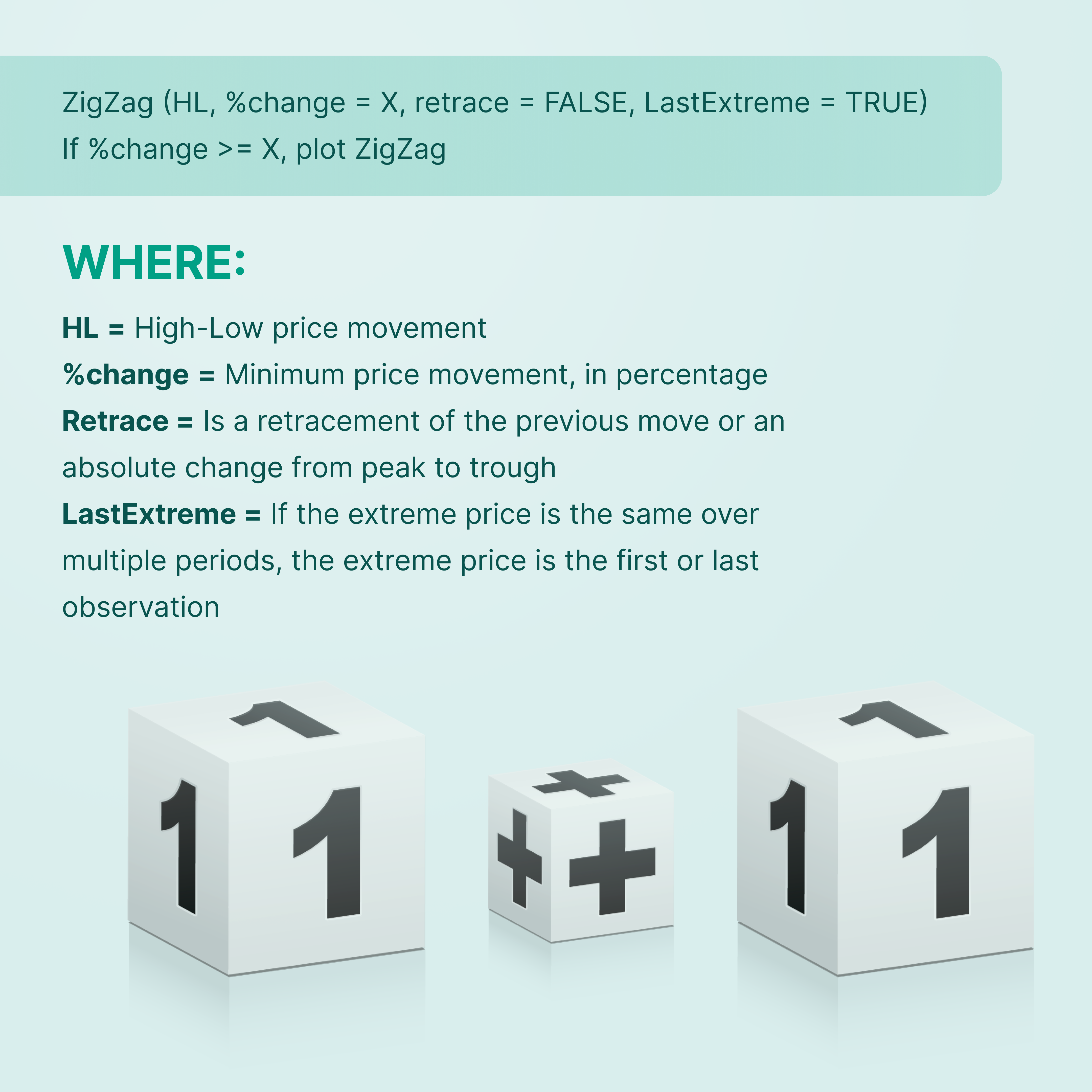
This formula is useful if you need to set up your own Zig Zag indicator. And if you just want to understand how a Zig Zag indicator works, here're some tips.
- Choose a starting point (swing high or swing low).
- Choose % price movement.
- Identify the next swing high or swing low that differs from the starting point => % price movement.
- Draw a trendline from starting point to the new point.
- Identify the next swing high or swing low that differs from the new point => % price movement.
- Draw trendline.
- Repeat the most recent swing high or swing low.
"=>" means "is equal or bigger than" (e.g., X => 5 means "X is equal or bigger than 5).
To install a Zig Zag indicator, you need to download it from the MQL5 website and follow our tutorial on how to install a custom indicator in MetaTrader.
How is the ZigZag indicator work?
The main purpose of ZigZag is to filter out small and misleading price movements to focus on important swings and trends. ZigZag determines the most significant highs and lows of the price and connects them with straight lines ignoring small fluctuations.
ZigZag is not trying to forecast the future price; it only helps to make sense of the past moves of the market. Still, some predictions may take place when combined with other price patterns and indicators.
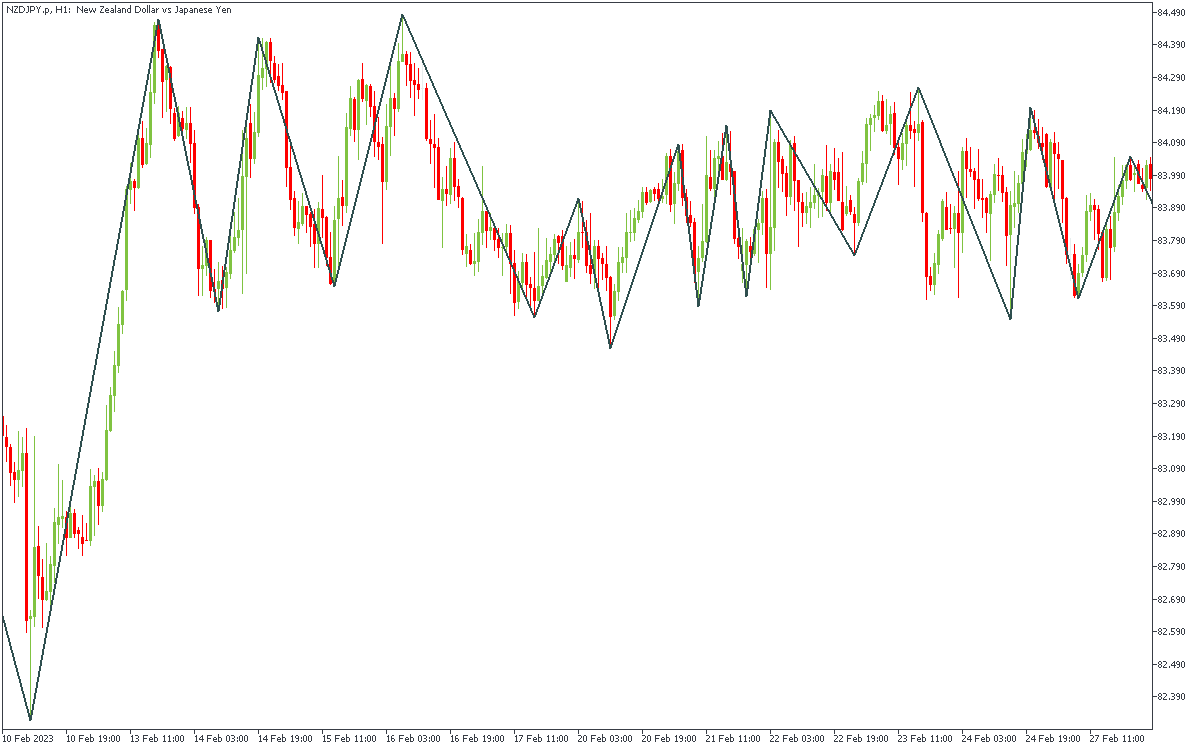
How to implement ZigZag Indicator to MetaTrader 4
To add the ZigZag indicator to a chart, click “Insert”, choose “Indicators”, and then “Custom”. You will then be able to pick out “ZigZag”. The indicator has 3 parameters. They are depth, deviation, and backstep.
Depth is the minimal number of candlesticks that won’t be regarded as a top/bottom if a top/bottom was already found using deviation.
The deviation is the minimal distance (in %) between the highs and the lows of the 2 consecutive candlesticks that will make the indicator form a local top or bottom.
Backstep is the minimal number of candlesticks between local highs or lows.
Below you can see the default parameters for Zigzag in MetaTrader 4. You can adjust the figures making the indicator more/less sensitive to the changes in price. If you reduce the value of the parameters, the number of local highs and lows will increase. As a result, there will be more ZigZag lines on the chart.
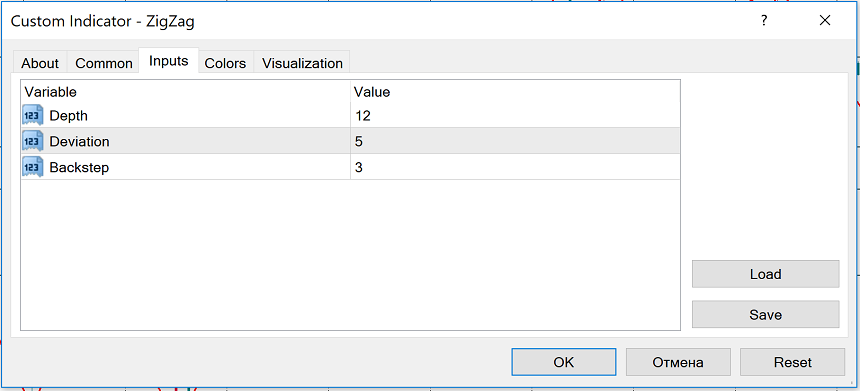
Advantages and disadvantages of ZigZag Indicator
It’s necessary to use the strong points of ZigZag while reducing the impact of its weak points on your trading.
The main advantages of ZigZag are:
- It shows the most substantial movements of the price and takes the market noise away.
- It works on different timeframes.
- It produces good results when used together with other technical indicators.
The drawbacks of ZigZag are:
- It will mark the latest high or low of the price with a time lag.
- The last stretch of the indicator (the one that involves the current price) may be redrawn.
How to use ZigZag indicator in Trading
ZigZag marks highs and lows on the chart. It will help you locate support and resistance levels.
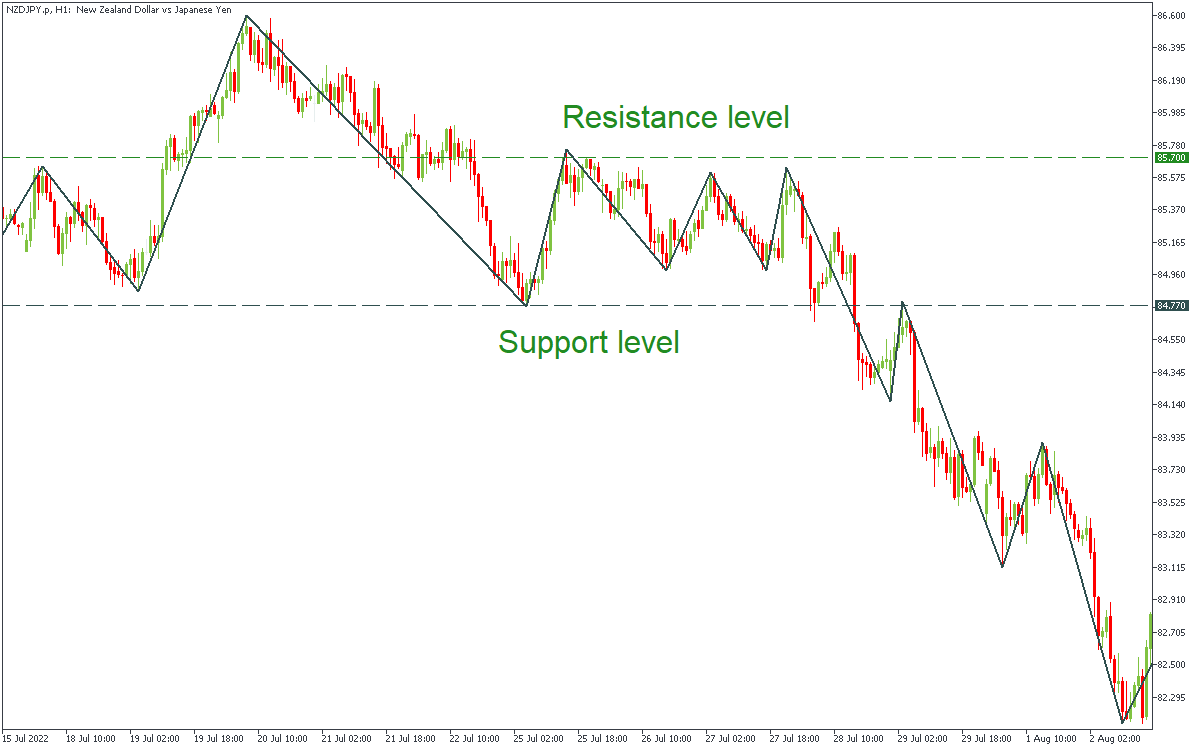
ZigZag also makes it easier to identify trends. Higher highs and higher lows mean that there’s an uptrend, while lower highs and lower lows are typical for a downtrend. If you use a trend-following strategy, ZigZag won’t provide you with entry signals, but it will help you decide which signals you are looking for – to buy in an uptrend or to sell in a downtrend. It will also help to find a place for Stop Loss.
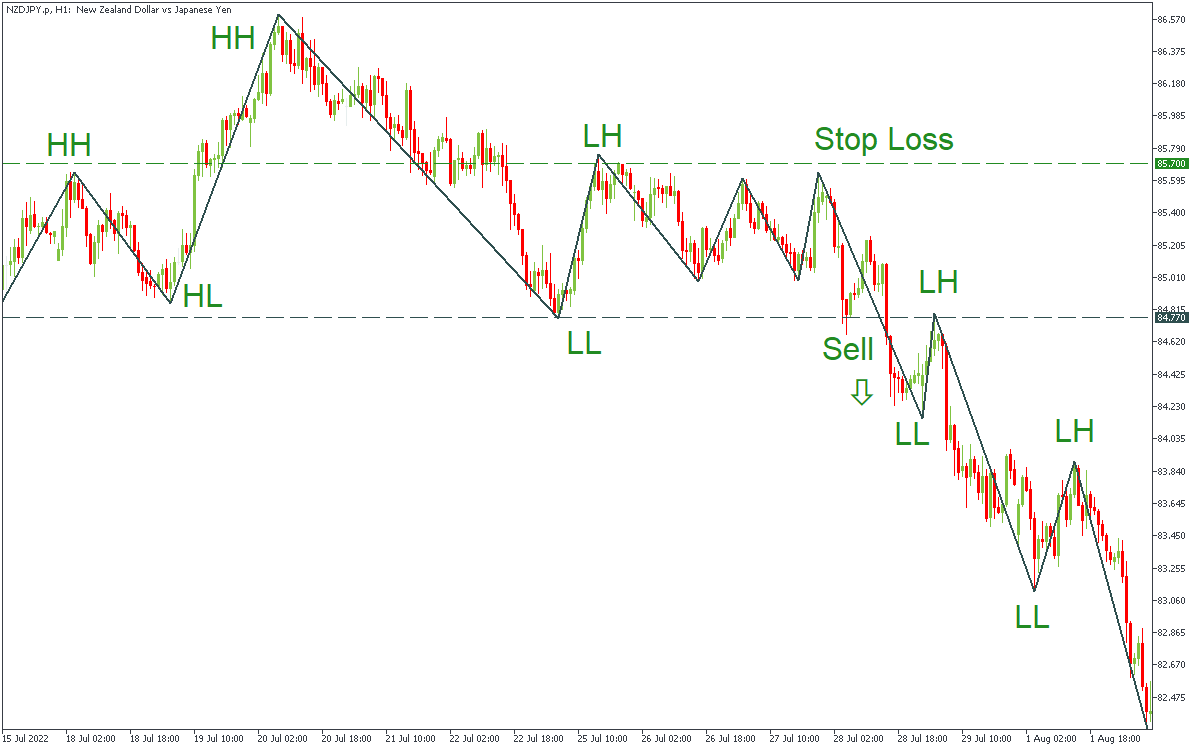
ZigZag also helps to identify chart patterns. Firstly, it allows spotting a 1-2-3 pattern that signals a change in the market’s direction. Moreover, it helps locate “Head and Shoulders”, “Double Tops”, “Flags”, etc.
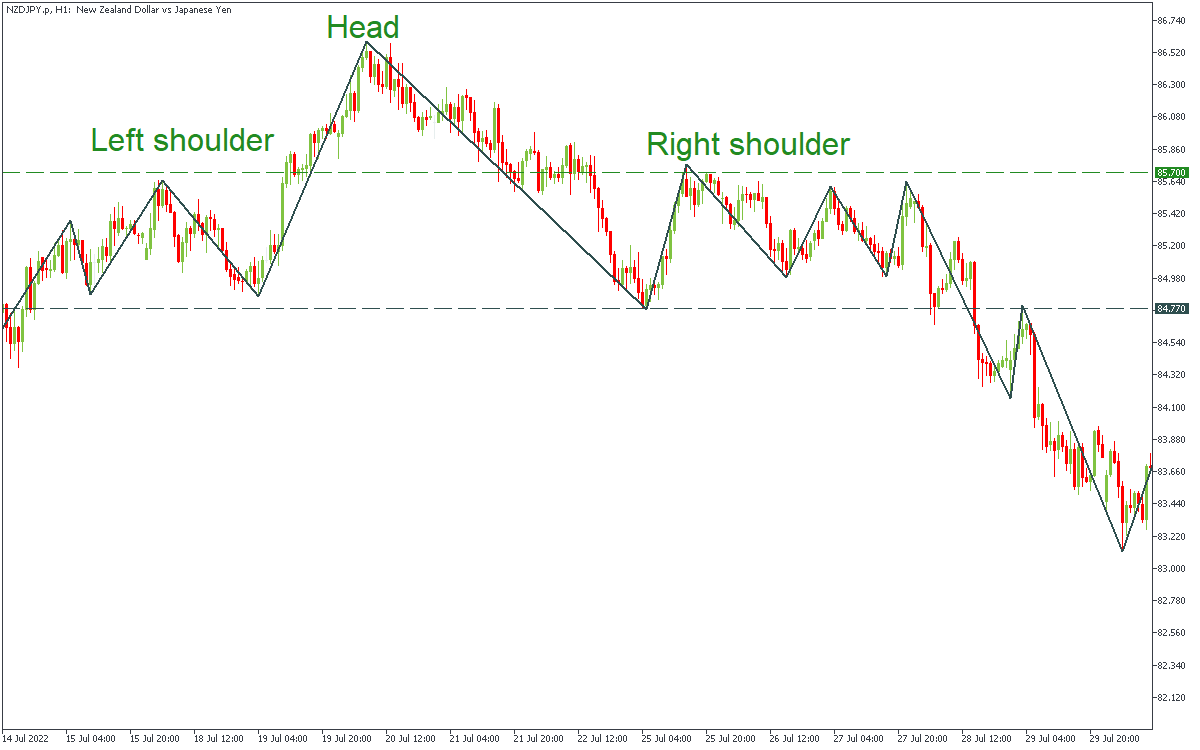
ZigZag and other tools and indicators
ZigZag indicator is often used together with other tools (Bollinger bands, Fractals, Fibonacci, and Elliott waves) to make out price swings. For example, ZigZag plus Fibonacci form a great tool for finding the end of correction within the main trend. Correction usually ends at 38.2%, 50%, or 61.8%. To make your analysis even more precise, you can use oscillators for confirmation.
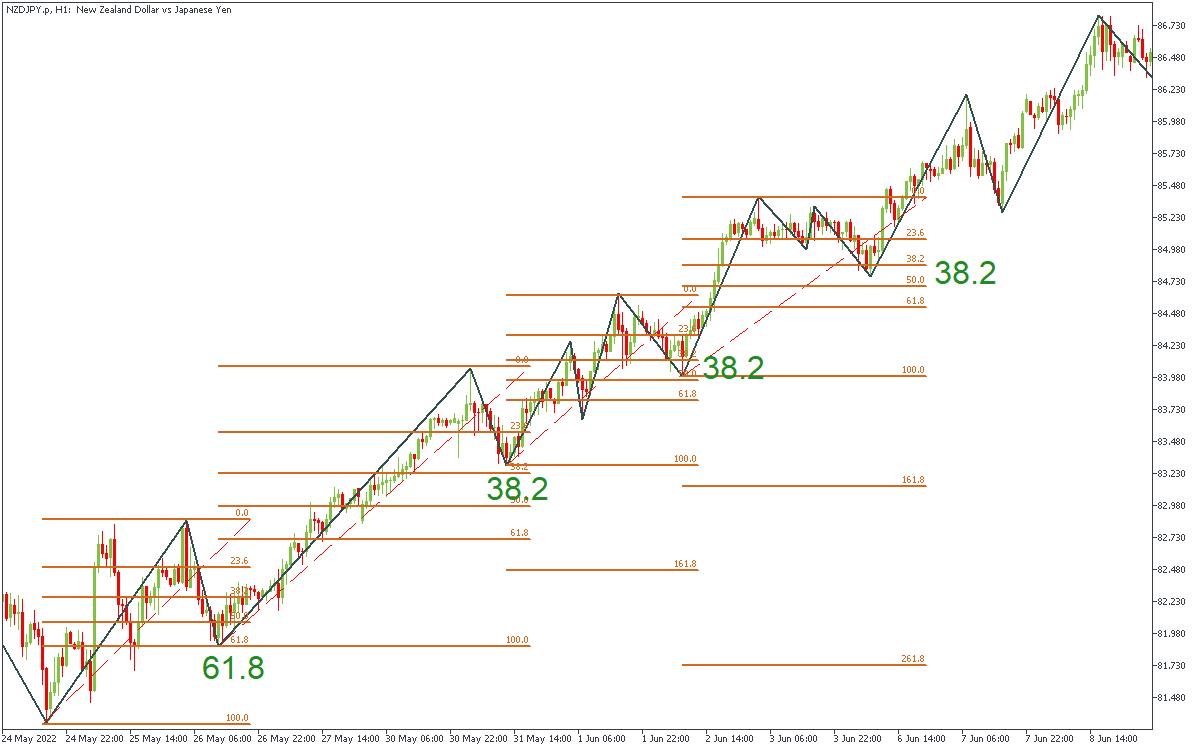
Mistakes to Avoid When Using ZigZag Indicator
Misinterpreting market noise
One of the key functions of the ZigZag indicator is to filter out market noise. However, a common mistake is to interpret every movement as a significant trend. It's important to set your parameters correctly, ensuring that minor price fluctuations don't misguide your trading strategy.
Over-reliance on ZigZag alone
While the ZigZag indicator is a powerful tool for identifying price trends and market patterns, it should not be used in isolation. It’s designed to be used in conjunction with other technical indicators like Bollinger bands, fractals, Fibonacci, and Elliott waves.
The indicator can lag in identifying the latest highs or lows in the market, and the most recent segment involving the current price might be redrawn. Hence, any signal it provides should be confirmed with other indicators.
Ignoring trend direction
ZigZag helps to visualize the market's structure by connecting significant highs and lows. However, traders sometimes overlook the overall trend direction, focusing instead on individual highs and lows. Remember, the overall trend direction, whether it's an uptrend or downtrend, is essential for successful trading. ZigZag should be used as a tool to confirm the trend direction, not to predict it.
Conclusion
In essence, the ZigZag indicator is a useful tool for filtering minor price fluctuations, highlighting significant market trends. Avoid common errors such as over-reliance on the indicator or ignoring the overall trend direction. Used correctly, the ZigZag indicator can enhance practical trading strategies by providing clear insights into the market structure.








No comments:
Post a Comment